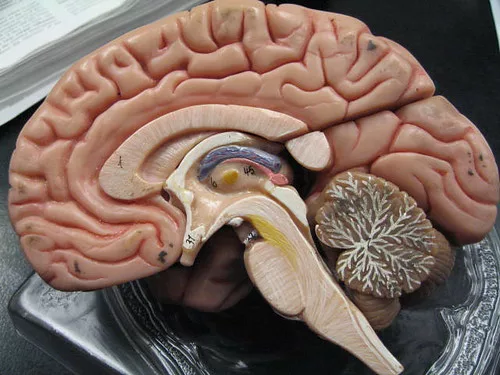In the chaotic hustle and bustle of our daily lives, finding moments of peace can seem like mission impossible. Have you ever wondered about the hypnotizing power of music in lulling your mind into a state of serene calm?
Immerse yourself in the fascinating realm where science meets soothing notes, exploring the intricate connection between relaxing music, brain rhythms, and the art of harmonizing your mind. As we travel through the labyrinth of our minds, the enigmatic dance of brain waves orchestrates our cognitive symphony, shaping attention levels and our emotional landscapes.
But what secrets lurk in the melodic embrace of quiet tunes? It reveals the fascinating science behind how music, with its rhythmic cadence and harmonic vibrations, has the extraordinary ability to entrain our brain waves, leading us down the path of relaxation and inner harmony.
Join us as we unveil the enchanting web of sound that transcends mere auditory pleasure, delving into the profound ways music can soothe our minds and induce a state of inner harmony.

The impact of music on brain waves: a harmonious connection
Now, let’s explore how music can affect our brain waves and induce states of relaxation. When we listen to relaxing melodies or gentle rhythms, our brain responds by synchronizing its electrical activity with the rhythm of the music.
This phenomenon is entrainment, the process by which external stimuli, such as music, influence our internal rhythms. Entrainment occurs because our brains naturally look for patterns and synchronize with them.
Excellent examples of music that are particularly relaxing for the brain include Chopin‘s Nocturnes and some works, such as La Mer by Claude Debussy. Other notable examples include Erik Satie‘s Gymnopédies.
Alpha waves: revealing the door to relaxation
A particular type of brain wave closely related to relaxation is alpha waves, also known as Berger’s rhythm and characterized by a frequency between 8 and 13 Hz. When we enter a state of calm or meditation, alpha waves become more critical in our brain activity.
Listening to music with a slow tempo and gentle melodies (for example, Albinoni’s Adagio or Bach/Marcello’s BWV 974) can help induce alpha waves in our brain. As the music flows through our ears, it guides our brain waves into a state of tranquility, allowing us to experience deep relaxation and a sense of inner peace.
Theta waves: navigating the realm of deep meditation
Theta waves have an even slower frequency, between 4 and 8 Hz. These waves are associated with deep meditation and increased creativity. When we reach a theta state, our minds become more receptive to new ideas and insights.
Music incorporating binaural beats or repetitive rhythms can help guide our brain waves into theta frequency range. By immersing ourselves in these relaxing sounds, we can open the door to profound meditation experiences and tap into our creative potential.
Some Indian or African music, for example, bases its structure on a rhythmic (or sometimes polyrhythmic) repetition of a straightforward motif. The effect of reiterating the same signal can induce the brain to the edge of a trance state, which, in many cultures, is associated with religious and spiritual experiences (e.g., shamanic journeys, also operated through the use of psychedelic substances).
However, the induction of theta waves does not occur quickly when rhythms tend to be very tight or produce an unpleasant reaction in the listener. Controversial examples may be Drumming and Four Organs by American composer Steve Reich. While enhancing monotony, these songs might provoke an excitatory reaction, increasing heart rate. Of course, I leave it up to the reader to subjectively evaluate and decide whether or not to include such works in their playlists.
Delta waves: the serenade of deep sleep and healing
The slowest frequency of brain waves is delta waves, which range from 0.5 to 4 Hz. Delta waves are most commonly associated with deep sleep and restorative healing processes in the body.
Listening to soothing music before bedtime can promote the production of delta waves, helping us fall into a deep, restorative sleep. As we surrender to the sweet melodies, our minds drift into a world of dreams while our bodies engage in essential repair and regeneration.
Serotonin release and music therapy
One reason music has such a profound impact on our minds is its ability to stimulate the release of serotonin, a neurotransmitter associated with happiness and well-being.
When we listen to music that resonates with us, our brains release serotonin, creating a sense of pleasure and fulfillment. This natural mood enhancer can help relieve symptoms of depression, anxiety, and stress.

Entrainment: music and brain synchronization
The concept of entrainment is not limited to relaxation. Music can also be used to synchronize brain waves for other purposes.
For example, if you need energy or want to improve attention and concentration, listening to music with a higher tempo or stimulating rhythms can help you align your brain waves accordingly.
By understanding the intricate relationship between music and brain waves, we can tap into the incredible potential within our minds. So the next time you need relaxation or mental clarity, activate some relaxing melodies and let the symphony of your mind harmonize with the melodies.
Choosing the right music for relaxation: tunes for mindful moments
When selecting music for relaxation, choosing tunes that resonate with you is essential. Different genres and styles of music can have different effects on individuals.
For some, classical compositions or ambient sounds can induce a sense of tranquility. Others may find solace in the sounds of nature or instrumental pieces. Experiment with different types of music and pay attention to how your mind and body respond to each selection.
Create your relaxation playlist: create harmony for your mind
Creating a personalized relaxation playlist can be a powerful tool for promoting inner harmony and well-being. As you explore different genres and artists, consider each track’s overall vibe and energy.
Include instrumental pieces and songs that evoke peace, serenity, and joy. Let your playlist become a sanctuary to retreat to whenever you need a moment of calm in the chaos of life. This collection of Spotify playlists can be a great place to start, from which to extract the works that can most efficiently produce relaxation or create a state of quiet cheerfulness (e.g., many of Mozart’s symphonies are considered a benchmark).
Benefits beyond relaxation: the holistic effects of music on well-being
The impact of music goes far beyond just relaxing. Research has shown that listening to music can positively affect our overall well-being.
Music has been found to reduce stress levels, lower blood pressure, improve mood, enhance cognitive function, and even increase immune system activity. It can uplift our spirit, inspire creativity, and provide comfort during difficult times.
Bottom line: embrace the healing power of music to harmonize your mind
Incorporating relaxing music into our daily lives can be a transformative practice. By understanding how different frequencies affect our brain waves and emotional states, we can harness the power of music to promote relaxation, inner harmony, and overall well-being.
If you like this post, you can always donate to support my activity! One coffee is enough!

